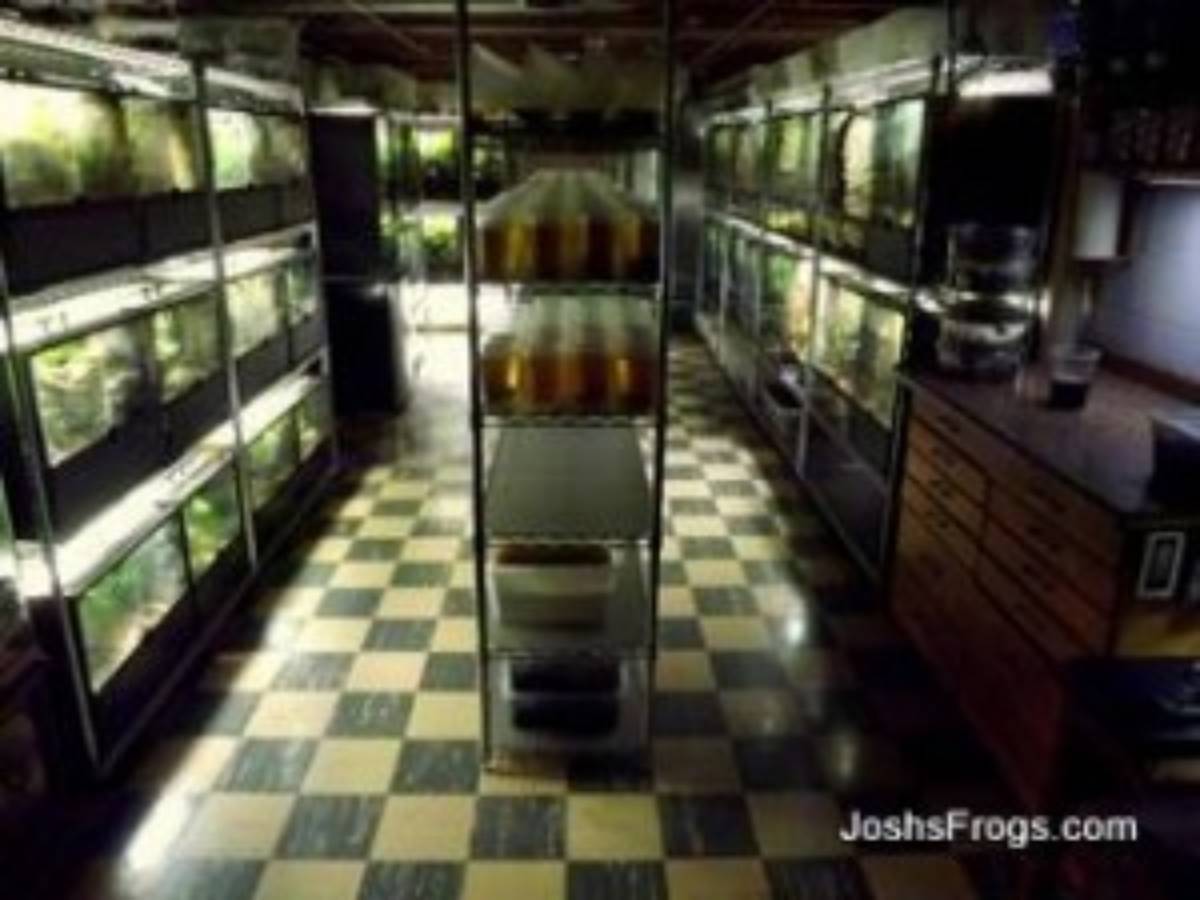Josh's Frogs
Keeping it Cool
Cooling Down your Vivarium in the Warmer Months
During the spring and summer, warmer temperatures can greatly increase the ambient temperatures in a home. Especially in the southern states, this can severely impact the daytime high temperatures that your vivarium experiences. This blog post will address techniques to keep your vivarium cool in the hottest months. They include placing your vivarium in a cooler place, ice, lighting, and the use of a/c units. Regardless of the method you choose to lower temperatures in your vivarium, I strongly recommend using a reliable digital thermometer to monitor temperatures.
Placing the vivarium in a cooler areaThe simplest way to reduce the temperatures in your vivarium is to move it to a cooler area. In the north, basements make an ideal location for a vivarium, as they will natural stay in the low to mid 60s F.
When available, a basement is the perfect place for a vivarium in warmer months.
Keeping your vivarium away from windows or direct sunlight will insure that it stays cooler. Placing it against a northern or southern facing wall will result in lower temperatures, as well. Additionally, placing the vivarium directly on the floor or a lower shelf can reduce it's temperature by a few degrees.
Ice
Ice provides an easy, economical way to reduce the temperature of your vivarium. Ice packs can be readily purchased at most general merchandise stores, or from businesses that sell shipping supplies. Alternatively, plastic water bottles can be filled half full and utilized. Simply place the ice pack or water bottle in the freezer for several hours until frozen, then wrap it in cloth (a hand towel or sock works very well). The ice can then be placed on top of the vivarium, or inside for maximum effect.
Lighting
Generally speaking, lighting adds heat to the vivarium, and will raise it's internal temperature. In some climates, it is helpful to run your vivarium's lighting on a reverse schedule. Having the lights off during the day and on during the night will result in a lower high temperature for the vivarium. When doing this, make sure that the vivarium is placed in a room that is completely dark during the day. Light from a window or lamp, a tv, or the like can keep the frogs up during the day.
LED lighting is energy efficient, produces more light, and runs cooler than traditional lighting.
Alternatively, lighting can be selected that does not put out as much heat as traditional lighting, such as T5s or compact florescents. LED lighting is a great option when high temperatures are an issue. Light Emitting Diode bulbs run much cooler, are much more energy efficient, and produce more light than traditional lighting.
Another solution is to increase the distance from the light to the top of the vivarium. This will decrease the amount of light that reaches your vivarium, but can cool it down several degrees. Having a fan blow across the light can decrease the temperature of the vivarium, as well.
Air Conditioning
Sometimes, cooling an entire house just to keep your vivarium cool is not possible (or economical). Using a portable or window air conditioner to only cool the room that your vivarium is located can be a more affordable, environmentally friendly solution. Many makes and models are available at retail stores and on the internet – I recommend doing a few days of research into a particular model before making a purchase.
Spend several days researching a particular model of air conditioning unit.
For those portable A/C units that have exhaust ducts, 2 duct units are much more effective and efficient. Keep in mind that most a/c units work via evaporative cooling, and will reduce the humidity in the air (and possibly drying out your vivarium, which would need additional misting). Most models have a drain pan to collect water which must be emptied regularly.
Using a Thermostat
When using any heat-producing equipment with your vivarium in conditions where high temperatures are a risk, a thermostat is never a bad idea. Heating equipment should always be used in conjunction with a thermostat. Not only will the thermostat make sure your critter is getting warm enough - it'll ensure it doesn't get too hot in case of an equipment malfunction.
Conclusion
Spring weather is finally upon us, and with it higher temperatures. For many of us, this may mean higher, and potentially dangerous, temperatures in their vivariums. Use the tips above to keep your vivarium, and animals, cool in the hottest of weather.



